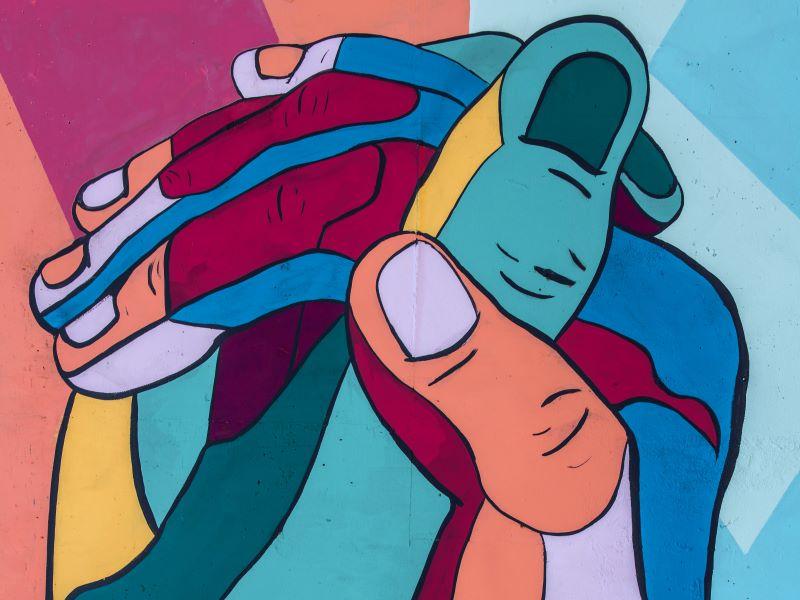The repurposing of traditional campus-based teaching for online instruction has highlighted its incompatibility with an increasingly diverse studentship, and the vital role that community plays in facilitating the learning experience. True community can only be achieved if it is inclusive to all learners, and to do so, all learners must feel that they are seen, valued and supported in the diversity that is reflected in the design and content of our teaching.
- Use design thinking and storytelling to help international students find their voices
- To build a community in higher education, start from the ground up
- We used a hybrid escape room to dramatically boost student attendance
These suggestions are based on our experiences with full-time campus students facing online teaching for the first time, as well as with part-time distance learners who have chosen this mode intentionally.
Creating a flexible ‘opt in’ community
A key element of community-building is allowing for flexibility and personal preference. Students appreciate the opportunity to engage in diverse ways, and no interaction is too small to create a buildable shared experience and sense of belonging.
- Asynchronous ways to build community can include collaborative playlists to use before lectures or during general study, baking challenges, fitness groups or pet/child/travel photo challenges, and even “gif wars” encourage communication and humour in a low-pressure, opt-in environment.
- Teams and Slack are useful platforms for creating community hubs and virtual coffee rooms among students and staff as well as for connecting students in different years of a programme.
- For local students, those relocating to study or those only visiting, a “bucket list” builds connection, supports a wider campus identity and facilitates a sense of belonging for isolated students. See our crowdsourced Glasgow Bucket List created using Microsoft Sway.
Creating inclusive community and curricula
Redesigning learning and teaching from the ground up to prioritise inclusive practice allows for the integration of new technology or forms of assessment at a deeper level. However, there are still opportunities to revise and reframe your practice to support peer-to-peer community and an inclusive curriculum on existing courses.
- Provide students with an entire year’s formative and summative milestones to allow long-range planning of academic, work and personal commitments.
- Current students can provide useful insight to support new students into their programme and may be more approachable. Temporarily enrol students from later years of a programme into a Year One Teams channel for the first two weeks of a semester.
- Begin to build community even before students are enrolled; invite offer holders to Facebook communities, and share accessible Sways with programme information. We use linktrees to compile programme resources, made using Sway, as a single point of contact that is continuously updated and accurate.
- Consider organising collaborative project groups according to time zone, working patterns or working styles. Students can nominate a pairing with a peer, and pairs can combine to create larger project groups. For in-class activities, create breakout rooms based on a preference for camera-on versus camera-off.
- Weekly checklists via the virtual learning environment (VLE) are useful to monitor student engagement and privately check in to provide additional support. You can also commend consistent progress and engagement to support students feeling seen and acknowledged.
- Adapt Office 365 apps to suit your purpose. We use the Planner app to help students transparently organise and monitor group work contributions. Flipgrid is also useful to asynchronously present presentations and facilitate peer and tutor feedback.
- Pre-record lectures and use live online lecture sessions as a “watch party” during which you play the recording and can engage with questions in the Zoom chat function in real time.
- Schedule one-to-one and group-based office hours to allow students to join in small groups that share a similar request, project or assessment. This helps time management and puts less pressure on students who might be intimidated or anxious.
- Use the live transcript/subtitles function on Zoom and Teams as a default during meetings or tutorials.
Embrace diversity
All accommodations or adjustments that increase accessibility and embrace diverse identities do so for your entire student cohort, not just those with registered needs or members of minority groups.
- Disclosure is a loaded and very personal choice. However, staff publicly disclosing and identifying as a minority identity or neurotype can support those students most at risk of non-completion, discrimination or mental health vulnerability. Consider offering dedicated office hours that invite confidential discussion, for example, “rainbow” office hours offered by LGBTQ staff, a neurodiversity network to connect neurodivergent staff and students in a shared online Teams space, “first gen” coffee hours.
- Consider neurotype differences and differences in emotion regulation when preparing and delivering assessment feedback. Voice notes in Teams or Turnitin can allow unambiguous feedback that is not misinterpreted through an emotional lens.
- Build in structured milestones and formative deadlines for high-stakes, long-range assessments. Provide examples of assessed coursework to ground and make tangible new or unique assessments.
- Provide variation in office hours or live events to make them accessible to students in different time zones and vary between mornings and afternoons.
- Consider offering diverse modes of communication with live face-to-face interactions on Zoom, asynchronous voice notes on Teams or purely text-based chats. This facilitates differences in communication preferences, but also in work, personal or caregiver commitments and time zones.
The past 12 months have irrevocably changed how we teach. However, the experience has underscored that community and inclusion need to be at the core of all learning and teaching and are an opportunity to proactively move forward with positive changes for all learners and for the future of higher education.
Chiara Horlin is online distance learning MSc programme lead, Emily Nordmann is year 1 undergraduate lead, and Heather Cleland Woods is year 4 undergraduate lead, all in the School of Psychology at the University of Glasgow.
If you would like advice and insight from academics and university staff delivered direct to your inbox each week, sign up for the Campus newsletter.




comment